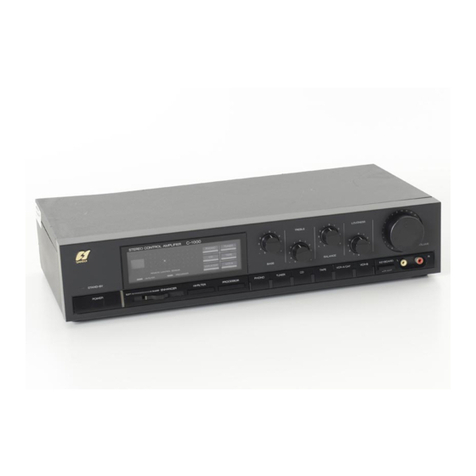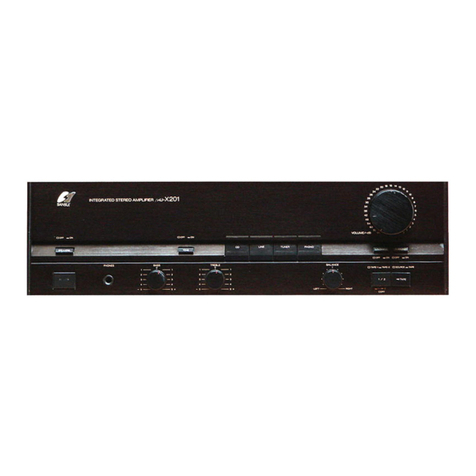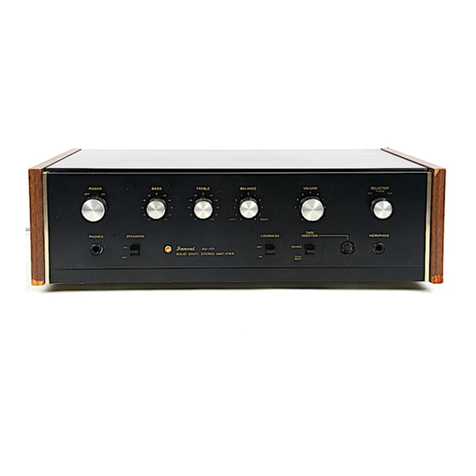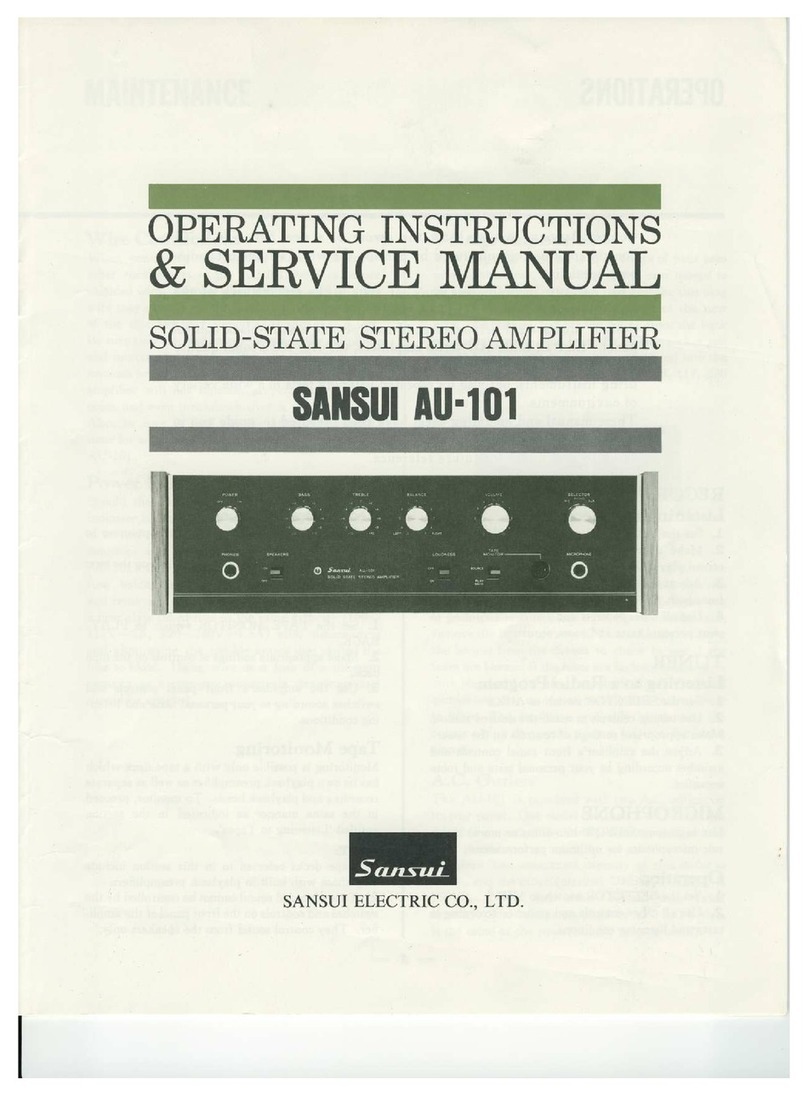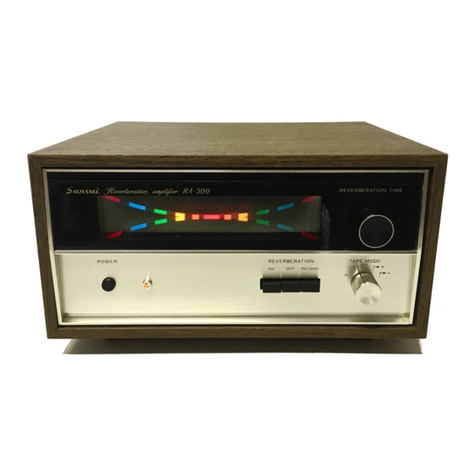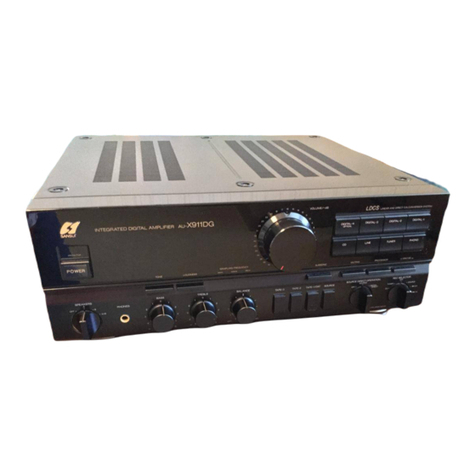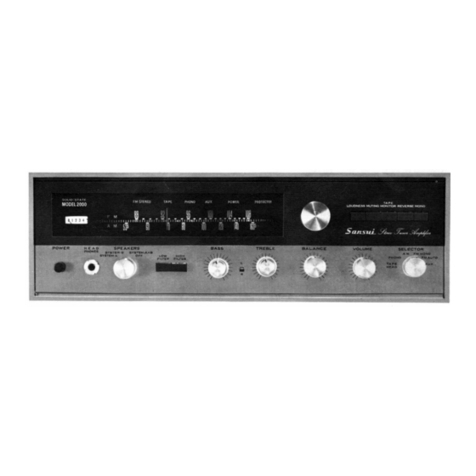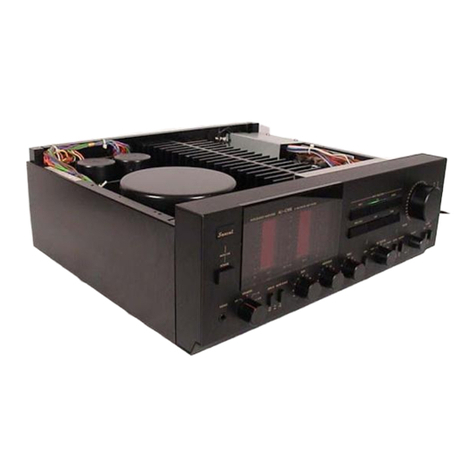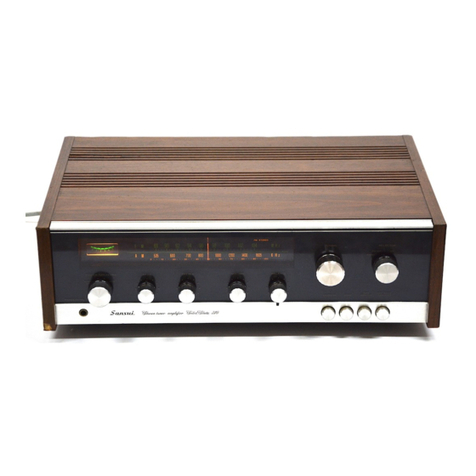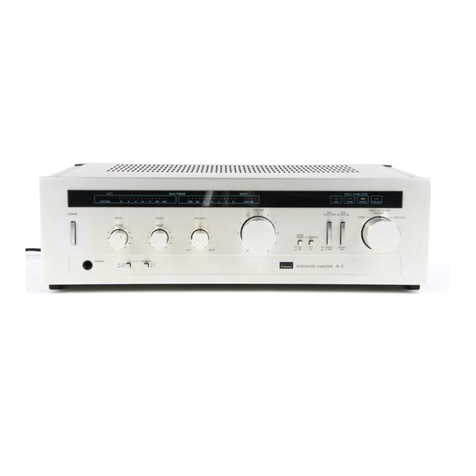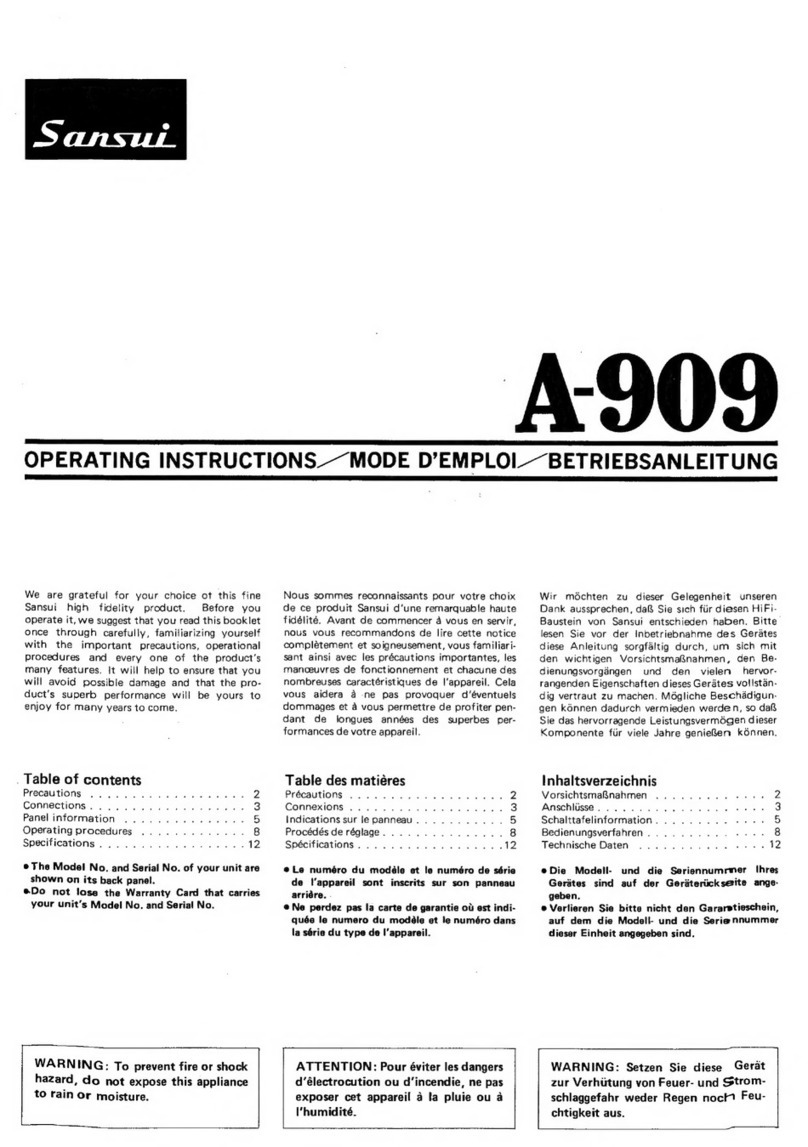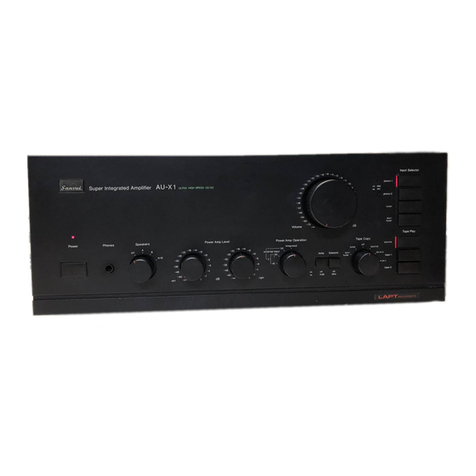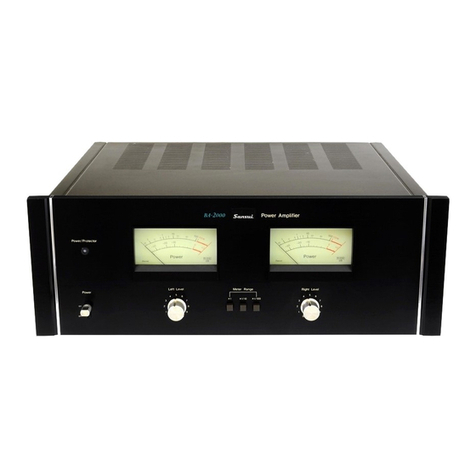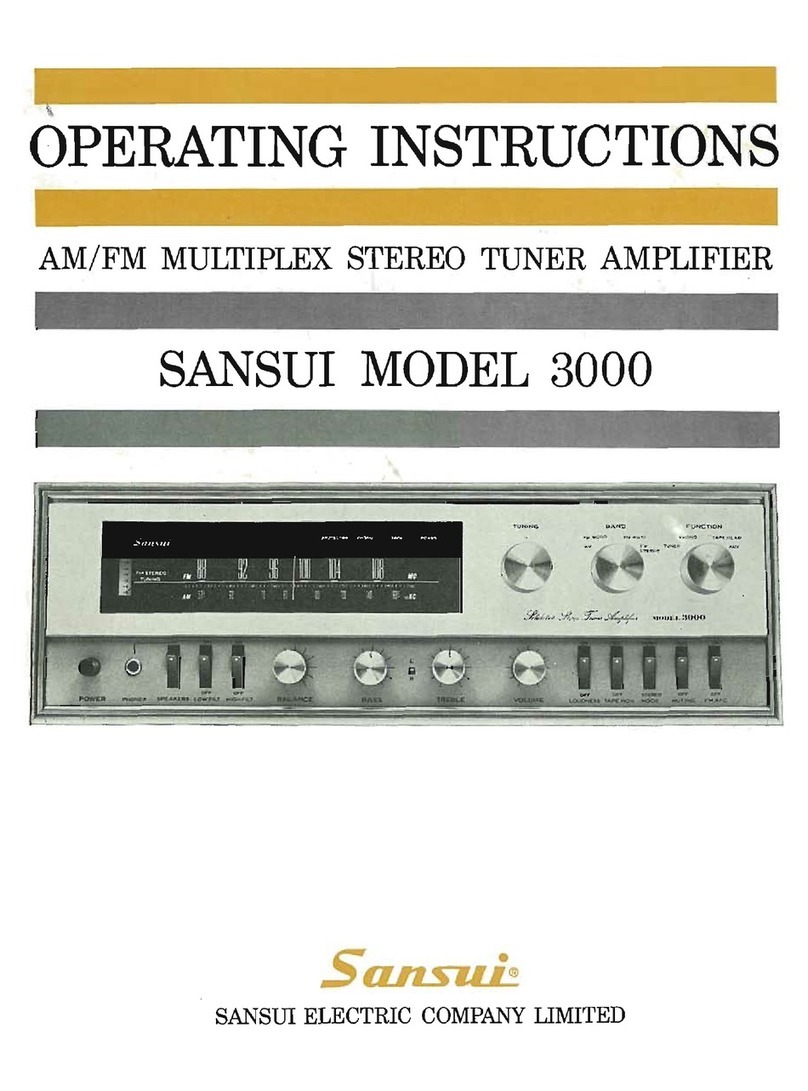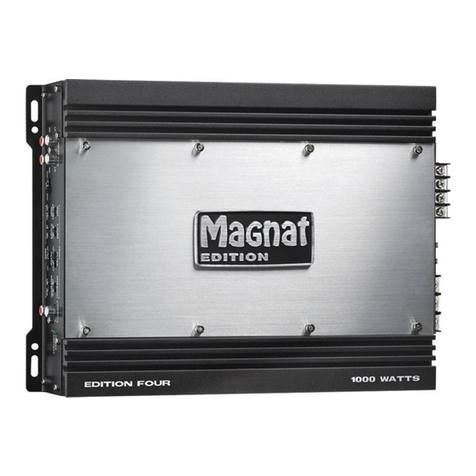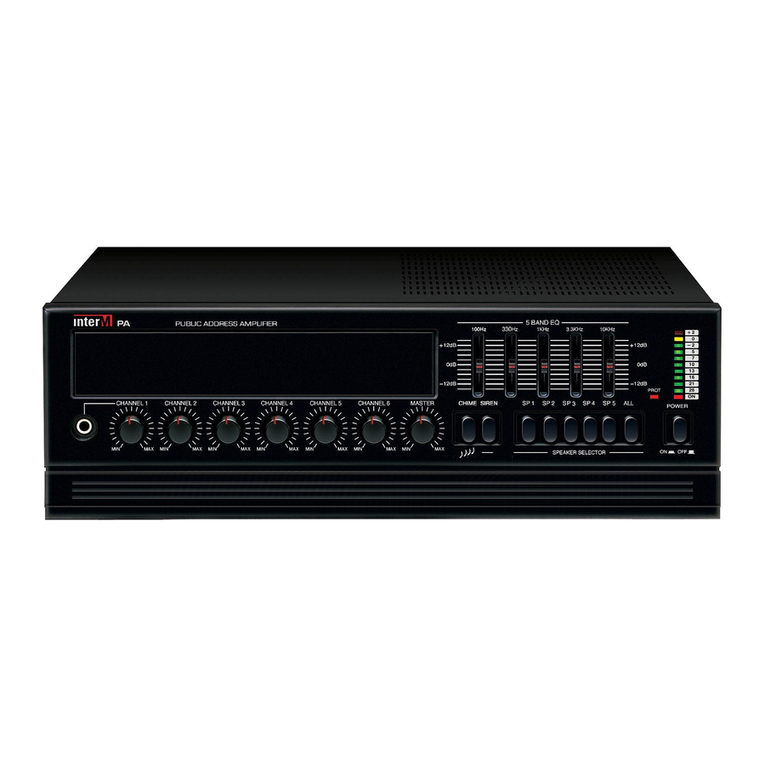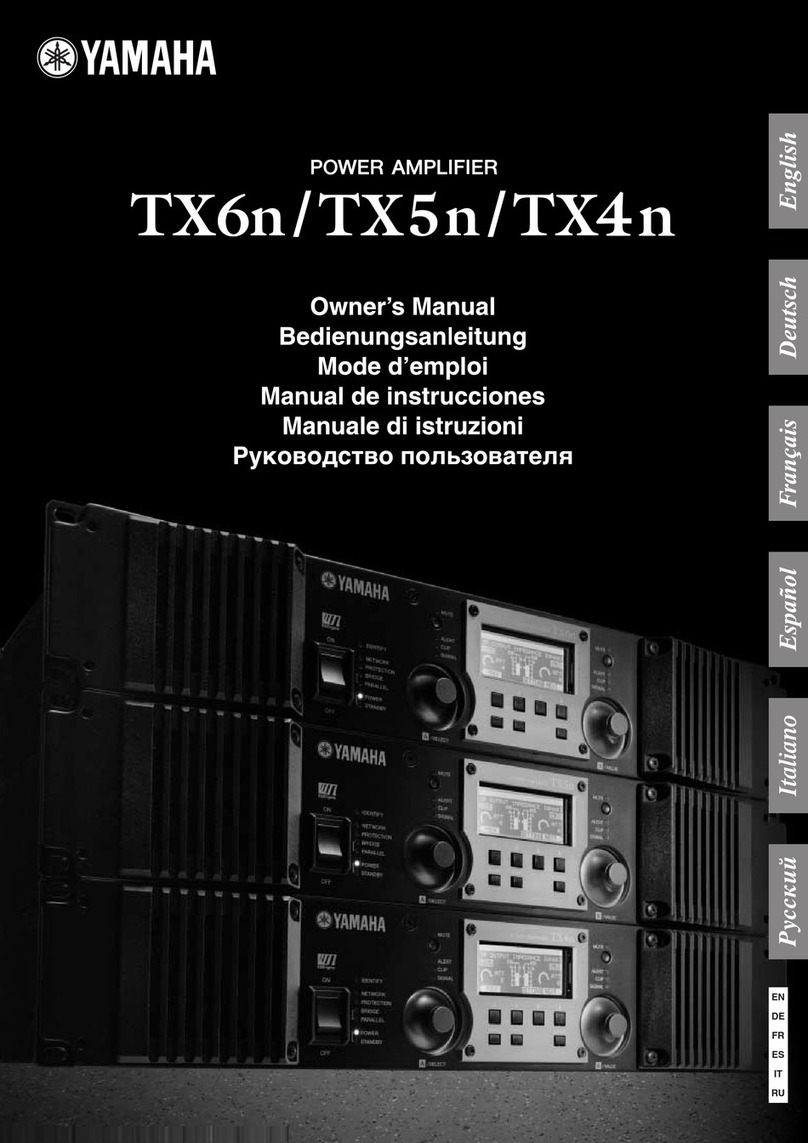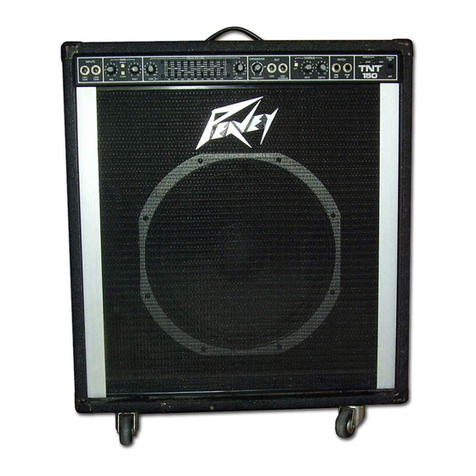
Congratulations
on
joining
the
thousands
of
proud,
satisfied
owners
of
quality
stereo
components
from
Sansui.
The
AU-999
is
the
most
advanced
professional
control
amplifier
ever
manufactured
by
Sansui.
Designed
specifically
for
an
ardent
audiophile
like
you,
it
features
the
refined
dull
black
panels
common
to
all
AU
series
professional
control
amplifiers
from
Sansui.
The
preamplifier
section
is
constructed
of
carefully
selected
low-noise
PNP
silicon
tran-
sistors,
while
the
power
amplifier
section
features
direct-coupled
circuits
specially
de-
veloped
with
the
improvement
of
tone
quality
in
mind.
Together,
they
permit
the
AU-999
to
deliver
a
full
180
watts
(4Q)in
music
power
output
with
unprecedentedly
good
tone
quality.
The
AU-999
is
lavishly
endowed
with
accessory
circuits.
These
include
a
Tone
Selector
circuit,
an
improved
form
of
the
Triple
Tone
Control
circuit
that
offers
a
choice
in
selec-
ting
the
critical
frequencies
of
tone
control;
a
Speaker
Selector
which
permits
connecting
three
sets
of
speaker
systems;
a
Balance
Check
Switch
which
simplifies
the
job
of
adjusting
for
optimum
balance
of
the
right
and
left
channel
sound
volumes;
facilities
to
connect
two
phonographs
and
two
tape
decks;
and
a
tape
reprint
circuit
which
makes
it
possible
to
copy
a
recorded
tape
by
utilizing
two
tape
decks.
Special
provisions
have
also
been
made
to
permit
the
amplifier
to
be
built
up
into
an
electronic
crossover
stereo
system
and
permit
comparing
such
a
system
with
a
standard
stereo
setup.
From
the
superior
performance
characteristics
to
the
careful
finish
of
control
knobs,
Sansui’s
tradition
of
quality
is
evident.
Packed
with
the
most
advanced
circuits
throughout,
the
AU-999
comes
to
you
with
the
full
confidence
and
guarantee
of
the
manufacturer.
It
is
now
up
to
you
to
read
the
contents
of
this
manual
carefully
before
setting
out
to
use
it,
so
you
may
operate
it
correctly
and
obtain
the
maximum
performance
it
is
capable
of
offering
for
many
years
to
come.
CONTENTS
SWITCHES
AND
CONTROLS
sic
oreusanseesdusascuctlonancaeasers
3,
4,
5,
6
OPERATIONS
ccisetvecztca
cece
ecesoacavelicinnenasaimclieesanueets
AeaSoces
7,8
——SPEAKER
CONNECTION
—
RECORD
PLAYING
OPERATIONS
cecal
eile
Gute
ecost
Aiea
subeena
de
cmetseeohasoaeeiarnead!
9,
10
——RADIO
RECEPTIONS
:
-~—MICROPHONES
OPERATIONS
cocliterl
Masud
te,
Whi
NAT
ne
Rien
vedtdantan
daca:
11,
12
—TAPE
PLAYBACK
——TAPE
RECORDING
ELECTRONIC
CROSSOVER
SYSTEM.
.....:ccccceeccecsseeeeeseeeeeeees
13,
14
MAMINTENANOE
-<.ccacaucn
ciate
ome
se
ae
marae
15,
16,
17,18
KR
COESSOR
IES
sasse.
a
sseocteeavauchorneacerne
i
catsins
Aolasen
ca
tneontanlboeate
tse
18
SPECIFICATION
Seve
ou
cass:
cncsaGsuvalssGic
utc
nie
atcconcsstnoiualeehitabadens
19
CHARACTERISTICS:
cte-ncsoseiectarasessilaicarsi
dena
ianeee
aia
naa:
20
TROUBLESHOOTING
CHORT:
siccsinasavincatunesisensceheten
tetra
21,
22
CUSTOM
MOUNTING
:oc.5.jondecresteesssiniess
tees
eeacteucmnaseen
23,
24
DISASSEMBLY.
PROCEDURE
®
:ccton
desis
in
ucerhaveses
seat
castuavtaninns
25
BLOCK
DIAGRAM/LEVEL
DIAGRAM
b::0.0<:d.sdeneversecsncdssehecadunaes
26
WRI
TONINEP
IGT
eaten
aust
dioceses
cece
aetna
yun
d
sate
ouee
27,
28
-—TEST
POINTS
—MAIN
AMP.
SECTION
OUTPUT
BALANCE/CURRENT
ADJUSTMENT
PRINTED
CIRCUIT
BOARDS
AND
PARTS
LIST......
29,
30,
31, 32,
33,
34
OTIS
PAR
US
bisoe
ca
isieeacscen
reset
eae
duciec
ia
vei
beuestmeuuas
ater
Resende
35,
36
OTHER
PARTS
AND
THEIR
POSITION
ON
CHASSIS..............
37,
38
